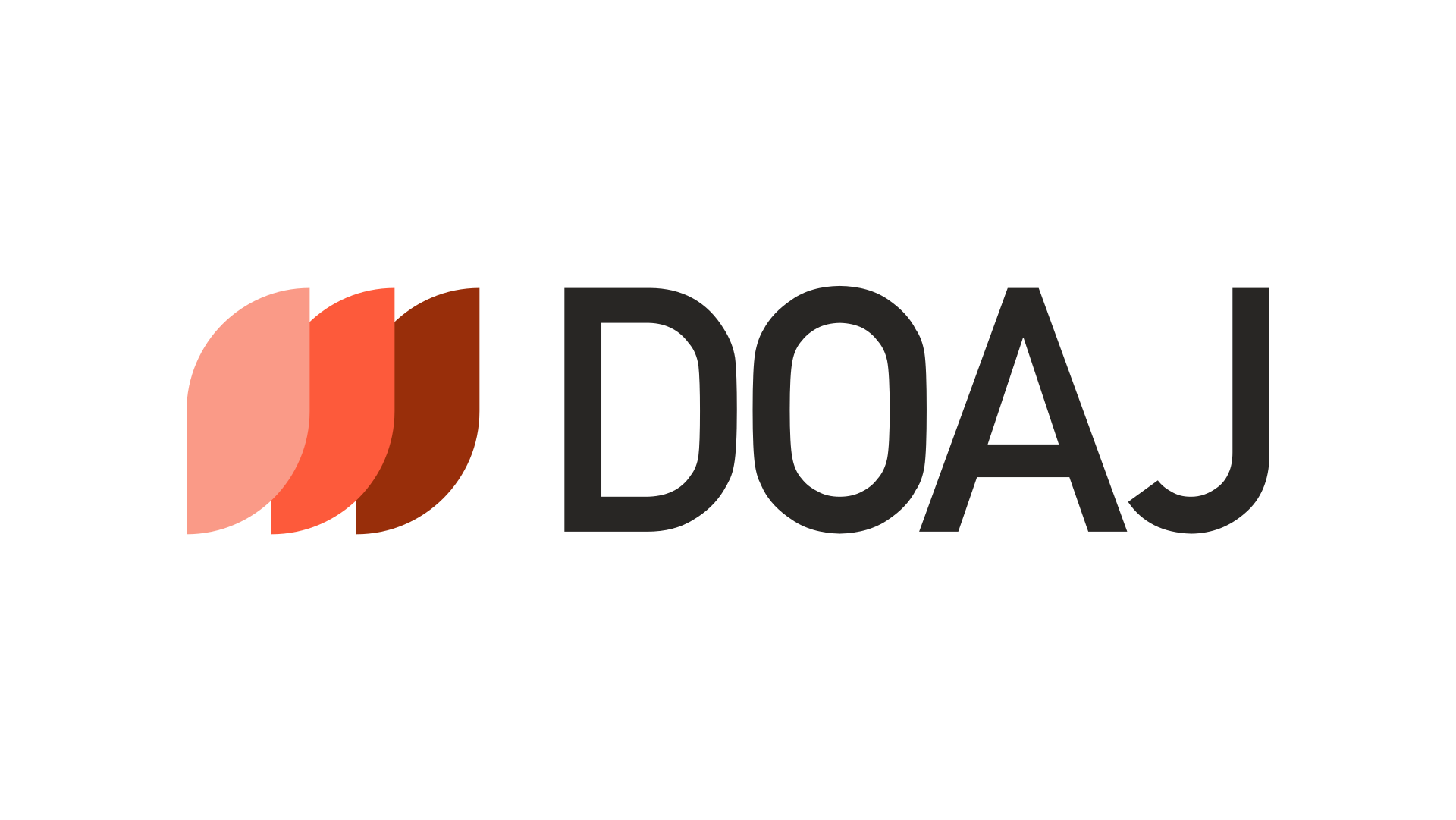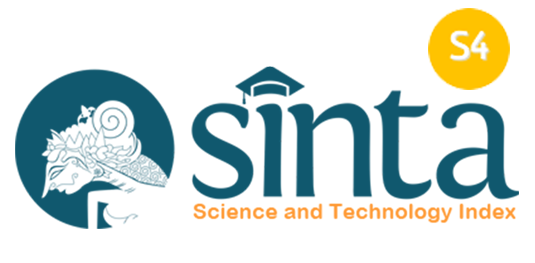ANALYSIS OF HIGH RISK FACTORS FOR NON-COMMUNICABLE DISEASE, STROKE IN THE SIDOARJO DISTRICT HEALTH SERVICE
Downloads
Introduction: Stroke is the number one cause of disability and the number three cause of death in the world. The burden caused by stroke is mainly caused by disability (a public health problem) which also creates a high cost burden for the sufferer, their family, society, and the government. Methods: The type of research in this research is a case study using quantitative descriptive design methods. This research was conducted in the working area of "‹"‹the Candi, Urang Agung, and Prambon Community Health Centers which are Community Health Centers in the Sidoarjo Regency Health Service Area. This research uses primary data and secondary data as sources of research data. Data samples were taken from 100 respondents at 9 Integrated Development Posts for Non-Communicable Diseases (IDP NCD) at the Prambon Health Center, Urangagung Health Center, and Candi Health Center, Sidoarjo Regency. Results: The research showed that the high-risk factors for stroke were hypertension in the high category at 41%, random blood sugar in the high category at 49%, cholesterol in the high category at 52%, and BMI in the high category at 40%. Conclusions: Based on the research results, the highest risk factors for stroke are cholesterol, random blood sugar, hypertension, and BMI which indicates obesity. The results of the analysis of stroke risk factors are still high, so it is necessary to optimize advocacy and integrated partnerships in stroke prevention and control through promotive, preventive, curative, and rehabilitative activities in an integrated and sustainable manner.
Arifin, H., Chou, K. R., Ibrahim, K., Fitri, S. U. R., Pradipta, R. O., Rias, Y. A., Sitorus, N., Wiratama, B. S., Setiawan, A., Setyowati, S., Kuswanto, H., Mediarti, D., Rosnani, R., Sulistini, R., & Pahria, T. (2022). Analysis of Modifiable, Non-Modifiable, and Physiological Risk Factors of Non-Communicable Diseases in Indonesia: Evidence from the 2018 Indonesian Basic Health Research. Journal of Multidisciplinary Healthcare, 15(September), 2203–2221. https://doi.org/10.2147/JMDH.S382191
Balqis, Sumardiyonno, H. (2022). Hubungan antara Prevalensi Hipertensi, Prevalensi DM dengan Prevalensi Stroke di Indonesia (Analisis Data RISKESDAS dan Profil Kesehatan 2018). 10(1), 379–384. http://ji.unbari.ac.id/index.php/ilmiah/article/view/1950/1117
Cena, H., & Calder, P. C. (2020). Defining a healthy diet: Evidence for the role of contemporary dietary patterns in health and disease. Nutrients, 12(2), 1–15. https://doi.org/10.3390/nu12020334
Chen, R., Bruce Ovbiagele, & Feng, W. (2017). Diabetes and Stroke: Epidemiology, Pathophysiology, Pharmaceuticals and Outcomes. Am J Med Sci, 351(4), 380–386. https://doi.org/10.1016/j.amjms.2016.01.011
Dinkes Sidoarjo. (2022). Profil Kesehatan Sidoarjo 2021. In Sidoarjo : Dinas Kesehatan Sidoarjo (Issue Mi). https://drive.google.com/file/d/1E2bANDyPFgx9OyBmNDYz4HzleodPkAuJ/view
Dirjen Peraturan Perundang-undangan Kemenkumham RI. (2016). Peraturan Menteri Kesehatan Republik Indonesia Nomor 39 Tahun 2016 tentang Pedoman Penyelenggaraan Program Indonesia Sehat dengan Pendekatan Keluarga (pp. 1–165). https://bphn.go.id/data/documents/16pmkes039.pdf
Dorrance, A. M., Matin, N., & Pires, P. W. (2016). The Effects of Hypertension and Stroke on the Cerebral Vasculature. Curr Vasc Pharmacol, 12(3), 81–108. https://doi.org/10.1007/978-3-319-29152-9_5
Gonzalez, P., Lozano, P., Ros, G., & Solano, F. (2023). Hyperglycemia and Oxidative Stress: An Integral, Updated and Critical Overview of Their Metabolic Interconnections. International Journal of Molecular Sciences, 24(11). https://doi.org/10.3390/ijms24119352
Gustian, A. U., Safirza, S., & Mursyida, M. (2023). Hubungan Kadar Gula Darah Sewaktu dengan Kejadian Stroke di Rumah Sakit Meuraxa Banda Aceh Tahun 2023. Media Kesehatan Masyarakat Indonesia, 22(4), 266–270. https://doi.org/10.14710/mkmi.22.4.266-270
Hao, W., Tashiro, S., Hasegawa, T., Sato, Y., Kobayashi, T., Tando, T., Katsuyama, E., Fujie, A., Watanabe, R., Morita, M., Miyamoto, K., Morioka, H., Nakamura, M., Matsumoto, M., Amizuka, N., Toyama, Y., & Miyamoto, T. (2015). Hyperglycemia promotes Schwann cell de-differentiation and de-myelination via sorbitol accumulation and Igf1 protein down-regulation. Journal of Biological Chemistry, 290(28), 17106–17115. https://doi.org/10.1074/jbc.M114.631291
Huttami, V. T., & Hidajah, A. C. (2020). The Utilization of Golden Period of Ischemic Stroke in Patients in Productive Ages. Indonesian Journal of Public Health, 15(3), 258–265. https://doi.org/10.20473/ijph.v15i3.2020.258-265
Ibrahim, M. A., Asuka, E., & Jialal, I. (2021). Hypercholesterolemia Pathophysiology. 6–11. https://www.ncbi.nlm.nih.gov/books/NBK459188/
Ishitsuka, K., Kamouchi, M., Hata, J., Fukuda, K., Matsuo, R., Kuroda, J., Ago, T., Kuwashiro, T., Sugimori, H., Nakane, H., & Kitazono, T. (2014). High blood pressure after acute ischemic stroke is associated with poor clinical outcomes: Fukuoka stroke registry. Hypertension, 63(1), 54–60. https://doi.org/10.1161/HYPERTENSIONAHA.113.02189
Jebari-Benslaiman, S., Galicia-García, U., Larrea-Sebal, A., Olaetxea, J. R., Alloza, I., Vandenbroeck, K., Benito-Vicente, A., & Martín, C. (2022). Pathophysiology of Atherosclerosis. International Journal of Molecular Sciences, 23(6), 1–38. https://doi.org/10.3390/ijms23063346
Katan, M., & Luft, A. (2021). Global Burden of Stroke. Stroke: Pathophysiology, Diagnosis, and Management, 208–211. https://doi.org/10.1016/B978-0-323-69424-7.00014-4
Kemenkes RI. (2018). Hasil Riset Kesehatan Dasar Tahun 2018. Kementrian Kesehatan RI, 53(9), 1689–1699. https://kesmas.kemkes.go.id/assets/upload/dir_519d41d8cd98f00/files/Hasil-riskesdas-2018_1274.pdf
Kivioja, R., Pietilä, A., Martinez-Majander, N., Gordin, D., Havulinna, A. S., Salomaa, V., Aarnio, K., Curtze, S., Leiviskä, J., Rodríguez-Pardo, J., Surakka, I., Kaste, M., Tatlisumak, T., & Putaala, J. (2018). Risk factors for early-onset ischemic stroke: A case-control study. Journal of the American Heart Association, 7(21). https://doi.org/10.1161/JAHA.118.009774
Kleindorfer, D. O., Towfighi, A., Chaturvedi, S., Cockroft, K. M., Gutierrez, J., Lombardi-Hill, D., Kamel, H., Kernan, W. N., Kittner, S. J., Leira, E. C., Lennon, O., Meschia, J. F., Nguyen, T. N., Pollak, P. M., Santangeli, P., Sharrief, A. Z., Smith, S. C., Turan, T. N., & Williams, L. S. (2021). 2021 Guideline for the Prevention of Stroke in Patients With Stroke and Transient Ischemic Attack: A Guideline From the American Heart Association/American Stroke Association. In Stroke (Vol. 52, Issue 7). https://doi.org/10.1161/STR.0000000000000375
Letelay, A. N. A., Huwae, L. B. S., & Kailola, N. E. (2019). Hubungan Diabetes Melitus Tipe II dengan Kejadian Stroke pada Pasien Stroke di Poliklinik Saraf RSUD Dr. M. Haulussy Ambon Tahun 2016. Molucca Medica, 12(April), 1–10. https://doi.org/10.30598/molmed.2019.v12.i1.1
Mosenzon, O., Cheng, A. Y. Y., Rabinstein, A. A., & Sacco, S. (2023). Diabetes and Stroke: What are the connections? Journal of Stroke, 25(1), 26–38. https://doi.org/10.5853/jos.2022.02306
Naha, S., Gardner, M. J., Khangura, D., Kurukulasuriya, L. R., & Sowers, J. R. (2021). Hypertension in diabetes. In Endotext. https://www.ncbi.nlm.nih.gov/books/NBK279027/
Nazar, C. M. J. (2014). Mechanism of hypertension in diabetic nephropathy. Journal of Nephropharmacology, 3(2), 49–55. http://www.ncbi.nlm.nih.gov/pubmed/28197463%0Ahttp://www.pubmedcentral.nih.gov/articlerender.fcgi?artid=PMC5297529
Sekretariat Kabinet RI. (2017). Instruksi Presiden Republik Indonesia Nomor 1 Tahun 2017 Tentang Gerakan Masyarakat Hidup Sehat (pp. 1–19). https://kesmas.kemkes.go.id/assets/upload/dir_519d41d8cd98f00/files/Inpres-Nomor-1-Tahun-2017-tentang-Gerakan-Masyarakat-Hidup-Sehat_674.pdf
Unger, T., Borghi, C., Charchar, F., Khan, N. A., Poulter, N. R., Prabhakaran, D., Ramirez, A., Schlaich, M., Stergiou, G. S., Tomaszewski, M., Wainford, R. D., Williams, B., & Schutte, A. E. (2020). 2020 International Society of Hypertension Global Hypertension Practice Guidelines. Hypertension, 75(6), 1334–1357. https://doi.org/10.1161/HYPERTENSIONAHA.120.15026
Utama, Y. A., & Nainggolan, S. S. (2022). Faktor Resiko yang Mempengaruhi Kejadian Stroke: Sebuah Tinjauan Sistematis. Jurnal Ilmiah Universitas Batanghari Jambi, 22(1), 549. https://doi.org/10.33087/jiubj.v22i1.1950
Wamai, R. G., Kengne, A. P., & Levitt, N. (2018). Non-communicable diseases surveillance: Overview of magnitude and determinants in Kenya from STEPwise approach survey of 2015. BMC Public Health, 18(Suppl 3), 1–8. https://doi.org/10.1186/s12889-018-6051-z
Copyright (c) 2024 Luluk Widarti, Muhammad Afif Hilmi Masyfahani, Dony Sulystiono, Kusmini Suprihatin, Hotmaida Siagian, Siti Maemonah

This work is licensed under a Creative Commons Attribution 4.0 International License.
Copyright Notice
1. The journal allows the author to hold the copyright of the article without restrictions.
2. The journal allows the author(s) to retain publishing rights without restrictions.
3. The legal formal aspect of journal publication accessibility refers to Creative Commons Attribution (CC BY).














